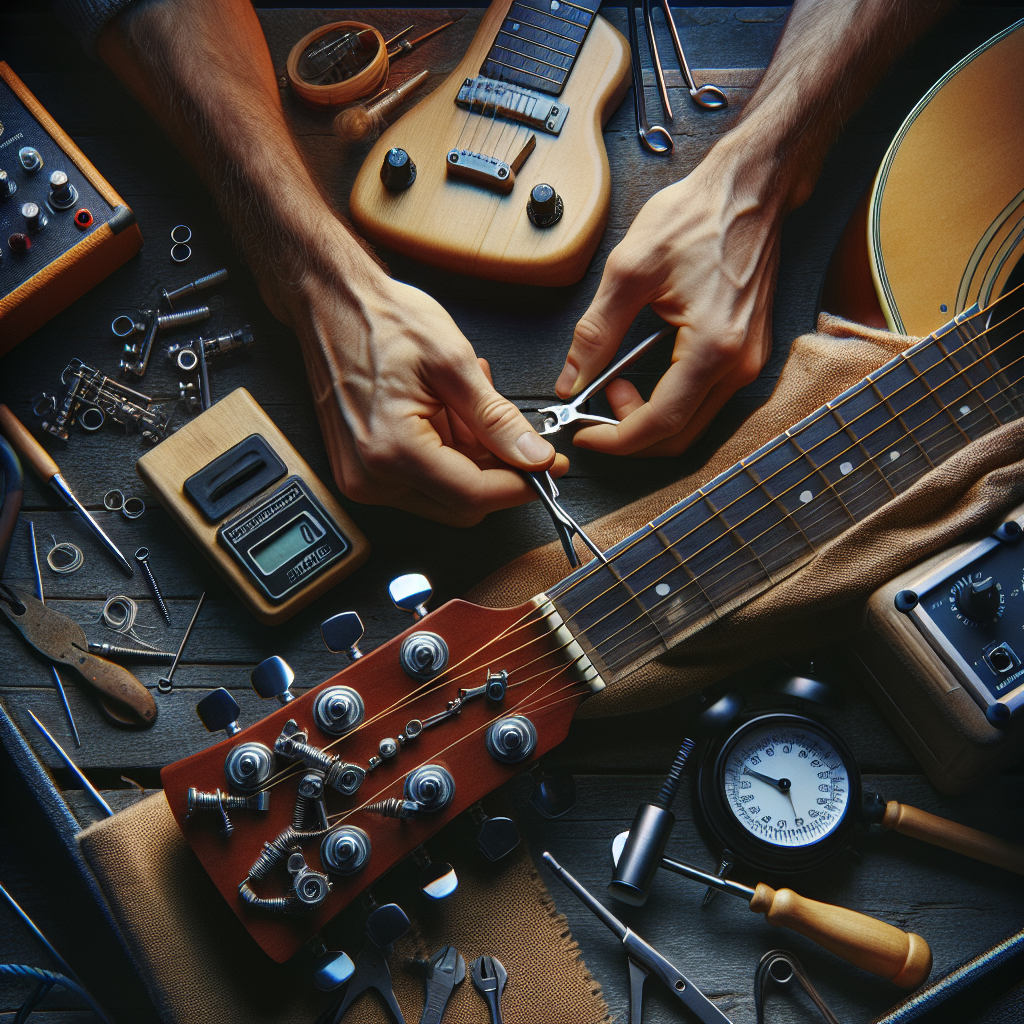
9 Simple Steps to Tighten Loose Tuning Machines for Optimal Guitar Performance
Anyone who plays guitar knows the frustration of loose tuning machines. They can cause your strings to go out of tune quickly, affecting your performance and constantly needing re-tuning. Ensuring your tuning machines are securely fastened is crucial for maintaining your guitar’s sound and your peace of mind. Here’s a detailed guide to help you tighten those loose tuning machines easily.
1. Understanding Tuning Machines
Tuning machines, also known as tuning pegs or tuners, are essential for adjusting the tension of your guitar strings to reach the desired pitch. They consist of several parts, including the tuning peg, gear, and housing. Over time, these components can loosen, especially with regular use or environmental changes. Before proceeding with tightening, it’s essential to understand how these components function together.
2. Gather the Right Tools
Before you begin tightening your tuning machines, ensure you have the right tools. You will typically need a small Phillips-head screwdriver or a flat-head screwdriver, depending on the screws on your guitar. Additionally, a wrench might be necessary for some tuning machine types. Having the correct tool helps prevent damage to the guitar or the machine itself.
3. Secure the Tuning Pegs
To start, examine the tuning pegs for any visible signs of looseness. Often, a simple tightening of the screws on the tuning pegs can resolve the issue. Using your screwdriver, gently tighten each screw that holds the tuning machines to the headstock. Be careful not to overtighten them, as this can strip the screws or damage the wood.
4. Tighten the Washer and Nut
Most tuning machines include a washer and nut at the top of the headstock. These can often come loose, leading to tuning instability. Use a wrench to gently tighten the nut, ensuring it’s snug against the washer and the headstock. This will help hold the tuning machine firmly in place.
5. Check the Gears and Lubricate
Loose tuning machines might also be due to issues within the gear mechanism. After securing the screws and nuts, check the turning of the pegs. If they feel stiff, the gears may need lubrication. Apply a small amount of machine oil to the gears to ensure smooth operation. This not only helps with the tuning process but can also reduce wear and tear over time.
6. FAQs
Q1: Can I use any screwdriver for tightening the tuning machines?
A: It’s crucial to use the correct size and type of screwdriver to prevent damage. Using the wrong tool can strip the screw heads or damage the guitar’s finish.
Q2: What happens if I overtighten the screws or nuts?
A: Overtightening can strip the threads of screws or nuts, damage the wood of the headstock, or even crack the tuner housing, leading to costly repairs.
Q3: How often should I check my tuning machines?
A: It’s a good idea to check the tuning machines every time you change strings or notice your guitar going out of tune more frequently than usual.
Q4: My tuning machines still feel loose. What should I do?
A: If they continue to loosen despite tightening, consider consulting a professional to ensure there’s no underlying structural issue with the guitar.
Q5: Is it normal for tuning machines to loosen over time?
A: Yes, with regular play and varying environmental conditions, tuning machines can naturally loosen. Regular maintenance can help mitigate issues.
Q6: Can I lubricate the tuning machines with any oil?
A: Use a light machine oil for lubrication. Avoid heavier oils, as these can attract dust and debris, potentially causing more harm than good.
Conclusion
Tuning machines are fundamental to your guitar’s performance. Periodic maintenance to ensure your tuning machines are secure can greatly enhance your playing experience by keeping your guitar in tune and avoiding mid-performance issues. If you find that your tuning machines repeatedly become loose or you encounter more complex mechanical issues, do not hesitate to consult a professional guitar technician for a thorough examination and potential upgrade. For further reading on maintaining your guitar, check out more resources at Fender’s Guitar Maintenance Guide.